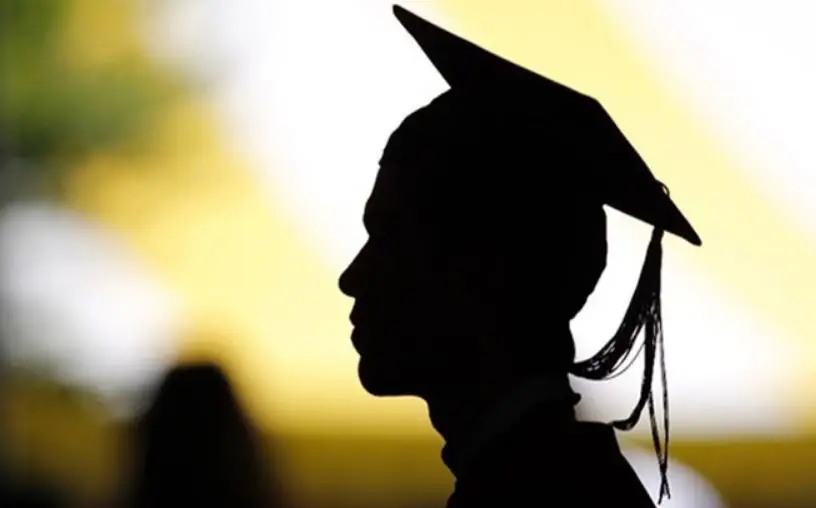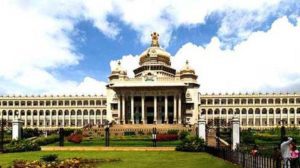Table of Contents
Higher Education in India & UGC | UPSC – IAS
University Grants Commission (UGC) was established in 1946 regulate Central Universities of Aligarh, Banaras and, Delhi. However, post-independence, the University Education Commission was set up in 1948 under the Chairmanship of S. Radhakrishnan and it recommended that the UGC be reconstituted on the general model of the UGC of UK. It was given a statutory status by UGC Act, 1956 and has the unique distinction of being the only grant-giving agency in the country which has been vested with two responsibilities:-
- That of providing funds and that of coordination,
- Determination and maintenance of standards in institutions of higher education.
What is UGC’s mandate ? | UPSC – IAS
- Promoting and coordinating university education both public and private universities including deemed universities and affiliated colleges.
- Determining and maintaining standards of teaching, examination and research in universities.
- Framing regulations on minimum standards of education.
- Monitoring developments in the field of collegiate and university education; disbursing grants to the universities and colleges.
- Serving as a vital link between the Union and State governments and institutions of higher learning.
- Advising the Central and State governments on the measures necessary for improvement of university education.
- Enforcing regulations and punishing for violations.
- Accreditation for higher learning is overseen by autonomous institutions established by the UGC. These institutions include: AICTE (All India Council for Technical Education), NAAC (National Assessment and Accreditation Council), MCI (Medical Council of India) etc.
Evaluation of UGC’s performance | UPSC – IAS
General Performance of Higher Education Institutes:
- Some institutions of India, such as the IITs, IIMs, NIITs, University of Mumbai and Jawaharlal Nehru University have been globally acclaimed for their standard of education.
- The IITs enroll about 10000 students annually and the alumni have contributed to both the growth of the private sector and the public sectors of India.
- Several other institutes of fundamental research such as IACS, IISc, TIFR, are acclaimed for their standard of research in basic sciences and mathematics.
- Mumbai University was ranked 41 among the Top 50 Engineering Schools of the world 2012. ISB, Hyderabad was ranked number 12 in global MBA rankings in 2010 while the AIIMS, Delhi has been recognized as a global leader in medical research and treatment.
- Government universities through affirmative action like reservations has been able to cater to the most backward and deprived sections of the population.
- Foreign universities actively seek Indian students.
However, our higher education suffers from many limitations some of which owe their origin to the limited effectiveness of UGC. Therefore, before discussing the problems of higher education it is better to discuss the problems of UGC itself.
Problems of higher education in india | UPSC – IAS
- Politicization of education with UGC becoming an arm of the HRD ministry, lacking autonomy and freedom.
- It is an overburdened body which regulates and oversees all the universities of the country including private and deemed, which is practically impossible for a single body considering the number of universities and affiliated colleges in the country.
- Policy fluctuation and arbitrariness.
- All the rules made by UGC need parliamentary approval but these are not always taken and hence they can be cancelled by the court, jeopardizing the future of thousands.
All this factors combined with government apathy and interference and status-quoist attitude of policymakers, has resulted in considerable malice in our higher education. In specific terms they are as follows:
- We have only 722 universities, as against the National Knowledge Commission (NKC) recommendation of 1,500.
- Not even one Indian higher education institution made it to the top 200 club in the Times Higher Education (THE) rankings for 2014-15.
- Disparity in access to education, especially in terms of economic class, gender, caste and ethnic and religious belonging.
- Expansion of the private, self-financing education sector, with commercial intent, has been another reason for the propagation of disparities. There has been a decline in the government institutes and increase in the private institutes. For 2013 the share of private undergraduate colleges and students is at 59 per cent and 37 per cent respectively. Out of the 712 universities, about 360 are of private, state and of deemed status. The high cost of private education has affected access by the poor to education.
- Lack of autonomy and independence, universally accepted as fundamental in higher education.
- Narrow view of education with education limited to attendance, exam, marks and degree. This results in poorly skilled students. As per a survey only 19% of engineering and 5% of non-engineering graduates are employable.
- Unscientific, partisan and non-merit based appointment of the faculty/vice-chancellor.
- Outdated Curriculum susceptible to tampering based on ideology of the government. It curbs creativity and critical thinking with skills set out of sync with modern times.
- Faculty accountability is missing in India. Worldwide, teachers are assessed by the students but the practice is yet to be followed in India in spite of rising salaries especially in the government universities and colleges.
- Poor quality of Research and Development in the universities, with the link to the industries missing and declining government support to R&D.
- Lack of access to global courses and knowledge.
Way Forward and Suggestions for Improvement | UPSC – IAS
Suggestions for Higher Education:
- The National Policy on Education (NPE) that was adopted by Parliament in May 1986 and Programme of Action (POA), 1986, and updated in 1992. Last review done in 1965 by Kothari Commission. Like in west regular review of education policy including higher education. For example UK has an institute for education statistics, as policy making with reliable data on a regular basis to assist policymaking.
- Emphasis should be on better teachers with quality training modules for them. Given the low rate of enrolment, we need more quality teaching institutions at the undergraduate level.
- Massive expansion of government universities and colleges providing quality education at low cost is the need of time. Expansion of self-financing private institutions be restricted to a reasonable level or compensate low income strata students with scholarship to enable them to study in private colleges. The present method, of extending educational loans from banks with interest subsidy by the MHRD, does not help the poor. Else, education rather than being a socio-economic leveler will become a source of disparity.
- Infrastructure can be improved with an increase in financial allocation. Academic reforms should be after deliberations with all the stakeholders and consistent to avoid unnecessary controversies like FYUP or CBCS. In the case of faculty, enforce the University Grant Commission’s (UGC) teacher-student ratio for each State, and ensure that the financial requirement of additional faculty is shared by the Centre and States.
- English textbooks of concerned subjects should be translated to the hindi/regional languages. The three- language formula needs to be adhered to. Teaching in the regional languages would make understanding relatively easy while minimal language competence in English should facilitate student access to English books. This method has been successful in Japan.
- Allow foreign educational institutions to enter into collaborations with Indian institutions on a large scale. Use of Massive Online Open Courses be encouraged.
- Autonomy as far as academic and administrative aspects are involved is a must. It includes the appointment of heads of institutional and executive bodies. A UGC committee had suggested the independence of institutions from the government as the bottom line for autonomy.
- Efficient use of skill development program of the government and improving the apprenticeship scheme.
- Identifying and empowering 50 top universities in every possible manner to seek global excellence as done by Russia.
- Increasing funding, including corporate funding for Indian universities.
- Incentivising research and publications among faculty members.
- In Korea, the best students enter the teaching profession because the social status of a teacher is very high. We need such a system in India.
Reforms Specific to University Grants Commission | UPSC – IAS
Higher education remains over-regulated and badly governed with far too many regulatory agencies in the picture. For such reasons, the NKC recommended the setting up of an Independent Regulatory Authority for Higher Education which would take on most of the roles of the UGC, the All India Council for Technical Education (AICTE), the Medical Council of India (MCI) and the Bar Council of India, all of which would either be abolished or assigned more limited roles. A government-appointed committee has already recommended abolishing UGC and replacing it with Independent Regulatory Authority for Higher Education.
Hence, it is important that structural and functional reform be introduced for UGC to make it relevant in contemporary times rather than an obstruction to the development of a world class higher education system. It should be provided autonomy so as to remain independent of changing ideologies of successive governments. Its regulatory and overseeing role needs to be relooked at to make them conducive rather than interfering. It should also be provided with representation from states for more holistic and grounded policymaking.




